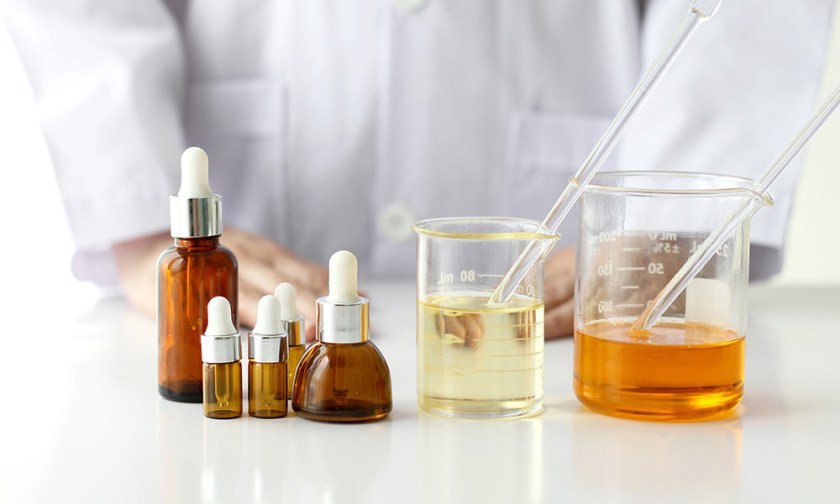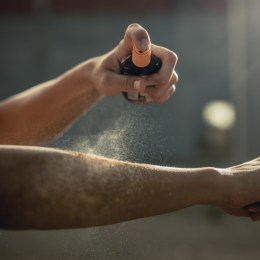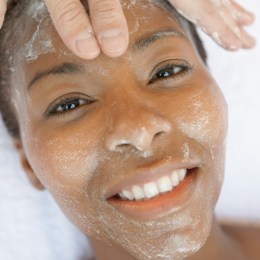“I’m alarmed and amazed at the disconnect between natural medicine and science,” says Michelle Reeve*. “It’s as if biochemistry has been unscrupulously expelled from the scientific community … especially disturbing if we consider that the birthplace of modern pharmacology was pioneered in botany.”
Driving home last week I was listening to a radio interview where the guest dryly compared a non-fact to “being as scientific as aromatherapy!”.
Unruffled, I wondered if he shared this same cynicism with other scientific concepts like gravity or atom splitting while imagining the ways I could test both on him!
I’m not exactly sure when essential oils became the unfortunate recipients of this kind of scepticism. Attitudes around aromatherapy have wandered from “benign pampering” to an “alternative therapy”.
Stacked against this mindset, however, is a body of recognised clinical research unpacking the benefits and applications of essential oils in medicine and allied therapies. These include and are not limited to aged care, dermatology, oncology and palliative care, along with burns and wound care.
For millennia, cultures around the world have prized plants for their medicine and healing qualities. In the 18th century scientists first started isolating the chemical compounds within plants and subjected these constituents to rigorous studies to better understand the mechanisms and compatibility with human physiology.
Plants have always been our original medicine and nutrient source. Essential oils are simply the pure and dynamic concentrate of the plants biochemical signature and the potential within these compounds are extensive.
Essential oils are complex and dynamic. Each precious drop of oil is comprised of hundreds of individual chemical constituents. These share commonalities that can be assembled into key functional groups.
Within these groups we can identify therapeutic benefits for a range of different body systems and the applications and medicinal properties. The clinical trials produced globally are now confirming centuries of anecdotal evidence.
Clinical Applications For Monoterpenes
The functional group most common to all essential oils are unsaturated hydrocarbons which have 10 carbon atom chains called monoterpenes that have a stimulating and detoxifying effect.
They activate the immune response and are powerful antibacterial agents. They not only help to fortify resistance against disease but protect against pathogens.
In nature they are the plants natural immune system. In humans, terpene molecules interact with NF-kappaB, the gene responsible for the inflammatory response at a cellular which activates immunity.
Although monoterpenes are one of the most common functional groups in aromatherapy, I find these one of the most compelling.
D-limonene, a monoterpene found mainly in lemon essential oil and the rinds of other citrus fruits have demonstrated strong anti-tumour activity. One study showed that carcinogen-induced rats fed limonene inhibited the development of tumours without any observable systemic toxicity. Especially interesting was the chemotherapeutic activity on induced mammary carcinoma.
One of the key limitations for the development of breast cancer prevention or treatment in humans is the volume required for oral dosing to replicate the therapeutic benefits. However, studies using topical treatment of D-limonene in the right concentrations have promising results in the reductions in breast tumour tissue proliferation while activating transdermal absorption of other treatment drugs.
Apart from the anti-cancer effects in pre-clinical mammary cancer models, clinical research using essential oil compounds is available showing applications in the fields of HIV management, AIDS treatments and infection control.

Aromaceuticals, the original cosmeceutical
For skin treatments monoterpene compounds provide a range of benefits. When applied to the skin topically, they are effective skin tonics with powerful antiseptic, astringent, antiviral and antibacterial properties ideal for targeting congestion, acne, blemishes and skin infections. They are also highly antioxidant offering benefits against sun exposure, glycation and oxidative stress.
The applications for essential oils in skincare are exciting. When we pair the physiology of the skin and the pharmacology behind essential oil compounds we create a match made in heaven.
- Transdermal Superstars
Remember the skin is waterproof. For a substance to penetrate the dermal layers effectively the molecular size needs to be extremely small and the particles need to be lipophilic (oil-loving). Essential oil constituents are so minute that they sprint into the dermal layer allowing us to measure the metabolites in blood and urine less than an hour after an aromatherapy massage. For an ingredient to transform the skin rather than simply cosmetically enhance it we need to be focusing on affecting the granulation layer where new basal cells are formed instead of treating the dead keratinised outer layers.
- Complex and Concentrated
An essential oil like rose is made of up a broad list of chemical compounds, each performing a different therapeutic function within the skin. These range from vasoconstricting (toning, astringent and cooling) to cicatrissant (cell stimulating and regenerating) to boosting natural moisturising factors and reducing inflammation. Considering you need 5,000kg of handpicked rose petals to make just one litre of rose essential oil, the intensity of benefits is remarkable. All oils are comprised of a number of functional groups consisting of many individual chemical constituents. Natural medicine is always mindful that the benefits are not from identifying and isolating just one active compound (the elusive magic bullet) but from the synergy of a complex and intense blend of compounds all working to deliver a complete skin solution.
- Biochemically Compatible
Natural skincare brands talk a lot about safety. My preference is to always focus on efficacy and activity. That is, what are the regenerative and corrective benefits of botanical extracts? It should not just be that these compounds are safe for our skin, more that they are biochemically compatible and nutrient rich. Human bodies are made from the same carbon, hydrogen and oxygen atoms found in the organic chemistry of the plant world, therefore our cells have the receptors to recognise, absorb, and metabolise botanical compounds. As a side benefit we can eliminate the by-products safely.
Increasingly we are seeing the term “biomimetic” used in the skincare space, ie., relating or denoting synthetic methods which mimic biochemical processes. Would it not be better to use the original form of the plant matter in the first place? When did cake mix become better than the real thing?
- Multi-Taskers
Essential oils offer multi-functional benefits. Many drugs available today produce a targeted response. Because of the complexity of essential oil many different compounds coexist in the same oil to deliver a range of benefits to many different skin indications. One of my favourite examples is lemon essential oil. We typically think about this oil well matched for oily skin because of its cleansing, detoxifying and antibacterial benefits. However, lemon also inhibits the anti-elastase enzyme that causes wrinkles and fine lines making it effective for aged skin also. Examples of multi-functional benefits are super-common in aromatherapy. Some of these co-existing homeostatic actions can modulate seemingly opposing skin types. Lavender illustrates this beautifully. In skincare lavender is powerfully antibacterial, antioxidant, anti-inflammatory, sebum-balancing, cell regenerating and hydrating. I can’t think of a skin type that wouldn’t suit these therapeutic benefits from congested acneic skin types with scarring to mature dehydrated skin with presenting with lines and wrinkles.
The challenge now is to maintain and support the research. Patenting laws do not allow IP on natural ingredients and the problem continues to be funding. Having said that, there is a growing body of data demonstrating that the investment will only reward us all. In skincare if we consider the health of the skin we see that essential oils are one of the key active ingredient groups which cannot be ignored.
Topically-applied essential oils are transdermal and non-comedogenic. Once absorbed, the skin they stimulate granulation for healthy new cells, purify the lymphatics and activate blood flow.
As powerful antioxidants, they combat free radical damage, inflammation and the precursors to oxidative stress.
Used correctly, they are non-toxic and are assimilated by the skin in the same way our gut processes food.
Sounds pretty perfect, right? So why aren’t these aromatic compounds more celebrated and revered in our dermal treatments instead of viewed as pure pampering? Really, it beats me.
- Michelle Reeve is founder and managing director of Australia’s Waterlily Skin Body Spa products and protocols and the new SpaCeuticals range. WATERLILYSKINBODYSPA.COM.AU





